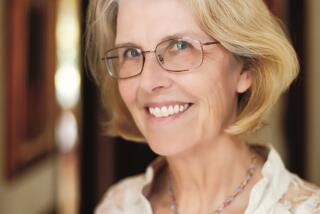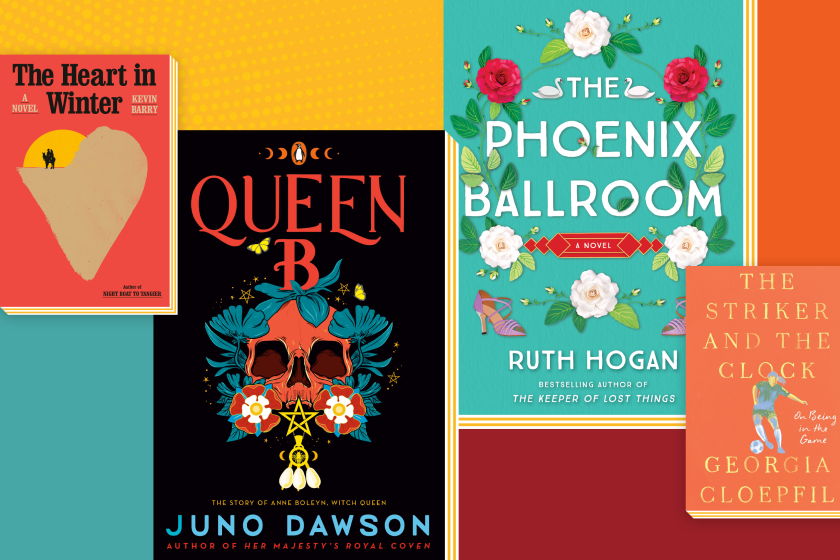Jane Crazy : Books: The 1992 convention of the Jane Austen Society of North America offered devotees three days to honor the author.
It is a truth universally acknowledged, that the admirers of Jane Austen are as ardent as any of rocker Axl Rose. Better behaved at the table perhaps, but just as passionate.
Witness last week’s 1992 convention of the Jane Austen Society of North America in Santa Monica. For three days, more than 300 Janeites from the United States, Canada and Great Britain gathered in the spirit of the organization’s charter, which states as its purpose, “to provide a meeting place for persons of literary and cultural interest where the life, works, critical essays, biographical studies and matters dealing with the social, political, economic and artistic background of the Jane Austen period may be dealt with from time to time.”
“These are dedicated ladies,” explained Stuart Tave, a University of Chicago English professor who spoke at the conference. As Tave pointed out, Austen aficionados tend to be overwhelmingly female, although, he allowed, “there are some husbands who get dragged along.”
How to tell if the woman browsing next to you in the bookstore is a Janeite, as Austen enthusiasts have been called for more than a century now? Piece of torte. A Janeite not only knows the names of all six of the great English writer’s novels, she probably rereads them once a year. And what does the committed Janeite wear to bed? How about a hot-pink nightshirt--a brisk seller at the conference--which cautions, “Not now, dear, I’m reading Jane Austen.”
What is known about Jane Austen comes mostly from her letters--the theme of this year’s conference, with an emphasis on travel and the sea (two of Austen’s brothers became admirals.)
The daughter of a clergyman, Austen was born in 1775 in Hampshire, England, into a comfortable rectory filled with books and affection. Her family encouraged her to write, but none of the novels published during her lifetime bore her name. She never married, although she was once engaged to a young man with a silly name, Harris Bigg-Wither. The engagement lasted overnight.
Austen seems to have gone through a period of embitterment over her spinsterhood, but she apparently emerged from that. In one of her later letters she talks about the pleasures of the time when she “must leave off being young.” She would be put on the sofa by the fire, she wrote, and she would drink “as much wine as I like,” and she would chaperon her beloved nieces and nephews and their friends. And it goes without saying that she would do what she did best: Observe, with the coldest of eyes.
Austen died in the arms of her beloved sister, Cassandra, in 1817. She was 41.
The most popular seminar at the conference was one on traveling and dining in Regency England. It was conducted by W. Simon Varey, a special projects editor at the Center for Medieval and Renaissance Studies at UCLA and a caterer. Varey entranced the crowd with food news from Austen’s day and with samples of hard cider and other goodies that the writer and her peers enjoyed.
“It’s a myth that the English always liked bland food,” he said, as he explained that cayenne and white and black pepper were widely used in 18th Century England. He also cited a English food writer who urged his contemporaries to stop boiling their veggies into oblivion and cook them tender-crisp--in 1783!
Varey whipped up such specialties of the Austen era as lamb chops rolled in marjoram and thyme, then grilled (“Americans say broiled”), and a side dish of stewed cucumbers, which he assured was better than it sounded. He also shared the traditional recipe for syllabub: “Squirt fresh milk into a pail with wine in it, whip it and serve it.” As Varey explained, that dubious-sounding delicacy was available even to Londoners because it was fashionable to send your servants out to buy milk fresh from cows that were paraded through the streets. Varey described the multitudinous dishes served at a typical country banquet, including unlovely tongue and udder and something called silver web (“I haven’t a clue what that is,” he acknowledged).
Austen’s reputation began to blossom soon after her death. Sir Walter Scott, Charles Dickens and others compared her to such giants as Henry Fielding, even Shakespeare. There were naysayers, to be sure, such as Charlotte Bronte, who granted that Austen was shrewd and observant but asked where the poetry was. Henry James was scathing about her work and the taste of her champions, and D. H. Lawrence railed against her. She was an old maid, Lawrence jibed, “thoroughly unpleasant, English in the bad, mean, snobbish sense of the word.”
Austen wrote about wonderful, silly women and charming, foolish men. Whether she was a committed feminist is a matter of continuing debate. But there is no doubt that she is an example of a precious minority in English literature, women who published superb prose. In a man, her drawing-room subject matter and her preoccupation with the manners and behavior of the privileged might be intolerable to enlightened readers. But she is a favorite of today’s women’s studies programs, and she is unbattered even by contemporary deconstructionists who argue that the text of a ketchup bottle label is as valid as a Shakespearean sonnet. “She’s tough to push around,” Stuart Tave said.
Barb Larkin, a 40-year-old who came to the conference from Missouri, said she loves Austen because of her humor and the authenticity of her characters. “They are as real as the people who stand in front of you at the grocery store or who sit next to you in church,” Larkin said. And like other Janeites, she also values the novels “because they are so well-written.”
Lucy Magruder, who lives in La Canada and organized the conference, said her favorite of the mistress’s novels is “whichever one I’m reading.” Before the conference, Magruder entered the text of Austen’s letters into her computer. This allowed her to do word searches on Austenite subjects of special interest to her. She discovered, for instance, that turkey was the main dish most often mentioned in the letters, and so it was turkey that was featured at the conference banquet. Magruder arranged to have the menus folded in the distinctive fashion of Regency letters, which served as their own envelopes--what Magruder called Austen origami.
If Austen is largely a white, female, well-educated phenomenon, she is also something of a growth industry. Between seminars, a Midwestern bookseller did a brisk business in volumes about the writer and her contemporaries. There the Janeite with room left on her bookshelves could find everything from a volume on “Sibling Love and Incest in Jane Austen’s Fiction” to “The Jane Austen Quiz & Puzzle Book.”
The Jane Austen Quiz
Consider yourself a Janeite? Answer all five of the following questions correctly and treat yourself to a cup of syllabub. Answers are below.
1. The first sentence of this story echoes the opening line of which of Austen’s novels?
2. What did Austen and John F. Kennedy have in common?
3. Which American novelist disliked Austen almost as much as he despised James Fenimore Cooper?
4. Lucy Magruder can name the six novels of Jane Austen. Can you?
5. What famous writer of children’s books wrote a stage version of “Pride and Prejudice”?
Answers: 1. “Pride and Prejudice”; 2. Like Kennedy, Austen probably suffered from Addison’s disease.; 3. Mark Twain; 4. “Sense and Sensibility,” “Pride and Prejudice,” “Mansfield Park,” “Emma,” “Persuasion” and “Northanger Abbey”; 5. A. A. Milne.
More to Read
Sign up for our Book Club newsletter
Get the latest news, events and more from the Los Angeles Times Book Club, and help us get L.A. reading and talking.
You may occasionally receive promotional content from the Los Angeles Times.






